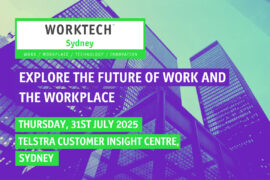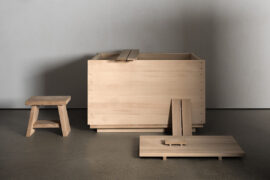Ken Shuttleworth ruminates the future of architectural design, the purpose of his Architectural Drawing Prize and how best to utilise AI for the greater good.

Since the inception of The Architectural Drawing Prize (TADP) in 2017, the international competition has become a platform for discourse around architectural drawing, celebrating and recognising architects’ and designers’ need to continue to draw despite the latest developments in technology. Established by Ken Shuttleworth, an architect and founder of MAKE Architects, the prize continues to uphold different modes of drawing as a way of understanding and interpreting the built environment, while embracing the new tools and technologies that aid in different processes of design ideation.

“In this digital age, some of the skills involved in hand drawing are getting lost,” explains Shuttleworth during the sit-down at the World Architecture Festival 2023 to delve into the reasons why he started the prize in the first place. “Students aren’t taught to draw these days; they go straight to a computer and, of course, they produce fantastic drawings. Nevertheless, I think it’s good to keep alive the art of hand drawing and the art of communicating through sketching. For me, starting the Architectural Drawing Prize was about ensuring that the art of drawing doesn’t die.”
A showcase of art and skill across three categories – hand-drawn, digital and hybrid, the competition has seen more and more digital drawing entries since its inception six years ago. Shuttleworth predicts that there might be a point in the near future where another category will be introduced to the competition, which is AI-generated art. “We are moving to the next stage with the dawn of AI and its impact on the creative process,” ruminates Shuttleworth. “While still in its early days, AI art will be one of the ways of expressing design ideas.”

While Shuttleworth believes in hand drawings as an important skill that will never be replaced in the architectural practice, he is also curious about AI and how it can create a positive impact in the ideation of architectural concepts. “I view AI as a tool,” says Shuttleworth. “Much like how we went from drawing boards to computers, AI will mark yet another change. We shouldn’t be scared of it, should try to embrace it and see what it can and cannot do. If AI can take away the drudgery of labour-intensive production and produce renders without hours and hours spent, this is where I see its biggest benefits of AI.”
With a similar curiosity towards AI as his admiration towards hand drawing, Shuttleworth is embracing the adaptation of AI tools in the everyday processes at MAKE Architects. Currently, ChatGPT, Midjourney and Stable Diffusion are in regular rotation as part of the ideation and conceptualisation processes at the firm. And while Shuttleworth does not think that AI-generated imagery is yet up to par in terms of generating very sophisticated or executable concepts, he admits that the technology can provide a useful dose of inspiration or a new take on an idea at its early stages of execution.

Shuttleworth is also hopeful that AI will bring about some major changes in the work processes at architectural practices down the line. “I remember the difference from going from drawing boards to computers, where in the olden days we probably had a team of about 150 architects working on a project, which, then, narrowed down to a team of around 20 working on a project of the same scale and complexity,” recalls the architect. “Similarly, if we could do a lot more with AI, we would have less people doing what used to be drafting, focusing more on ideating. The ideal outcome of integrating AI into everyday processes would be better work with less people, or having the same amount of people being able to work on more projects.”
Despite the optimism in AI, Shuttleworth believes that manual drawing will still remain an important part of creating. “Hand drawing is really the ability that we have as human beings to connect our emotions to physical spaces,” he says. “I think hand drawing is absolutely fundamental to get buildings to actually work for people you need to start with an actual sketch.”

This sentiment ties well into the recent architectural trend towards designing spaces that enable human connections, despite the fact of living in a digital age where interactions can be diminished to technological devices. Shuttleworth sees a visible increase in his clients’ requests for more spaces for interaction and well-being, an acceleration to integrate more interactive spaces and create environments that people want to go to and experience in person.
It is the same sentiment as with the desire to reconnect with spaces on a human and emotion level that is likely to keep the art of hand drawing alive in the digital age. The ability to create an emotional connection that can be achieved by putting a pen to paper is not always as palpable with a digitally-generated artwork. “I believe that drawing will still remain an important part of creating in the architectural field,” says Shuttleworth. “After all, architecture is about communicating emotion behind the building, whereas generating images from prompts in an AI engine doesn’t provide that same ability to communicate and transact emotion.”
INDESIGN is on instagram
Follow @indesignlive
A searchable and comprehensive guide for specifying leading products and their suppliers
Keep up to date with the latest and greatest from our industry BFF's!

For those who appreciate form as much as function, Gaggenau’s latest induction innovation delivers sculpted precision and effortless flexibility, disappearing seamlessly into the surface when not in use.

Now cooking and entertaining from his minimalist home kitchen designed around Gaggenau’s refined performance, Chef Wu brings professional craft into a calm and well-composed setting.

With Steelcase having reopened its refreshed WorkLife Showroom in Singapore this year, we spoke to Navedita Shergill about some key workplace macro shifts identified in their research.

Architectus Principals Simone Oliver and Patricia Bondin are set to speak at WORKTECH Sydney this year, so we asked them for some sneaky early insights on workplace design.
The internet never sleeps! Here's the stuff you might have missed

Now cooking and entertaining from his minimalist home kitchen designed around Gaggenau’s refined performance, Chef Wu brings professional craft into a calm and well-composed setting.

Jason Gibney, winner of the Editor’s Choice Award in 2025 Habitus House of the Year, reflects on how bathroom rituals might just be reshaping Australian design.